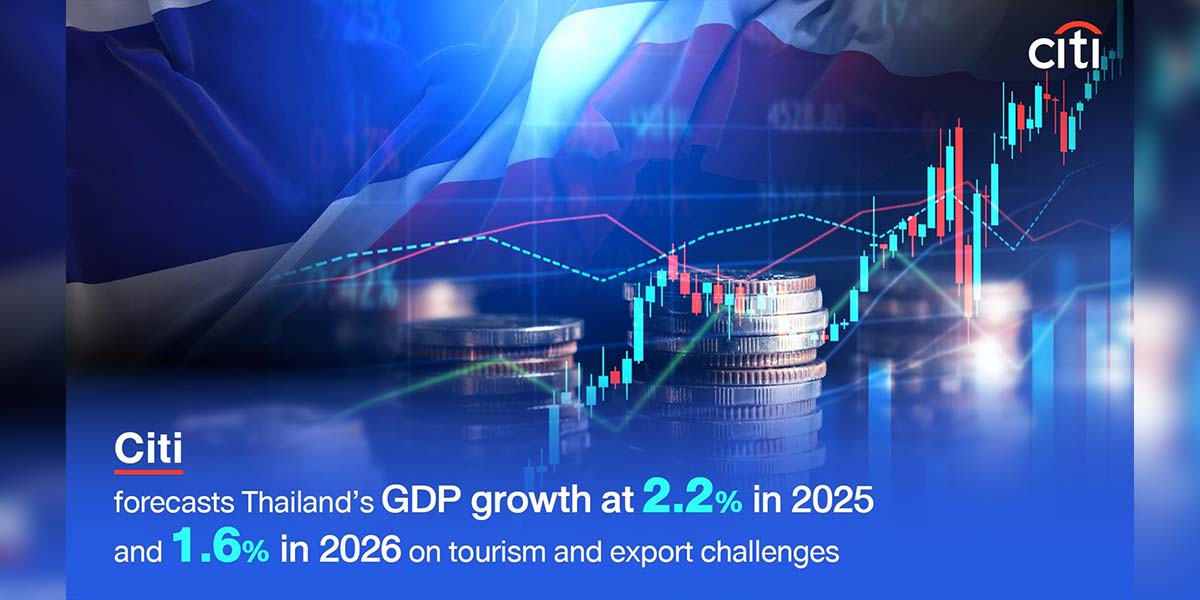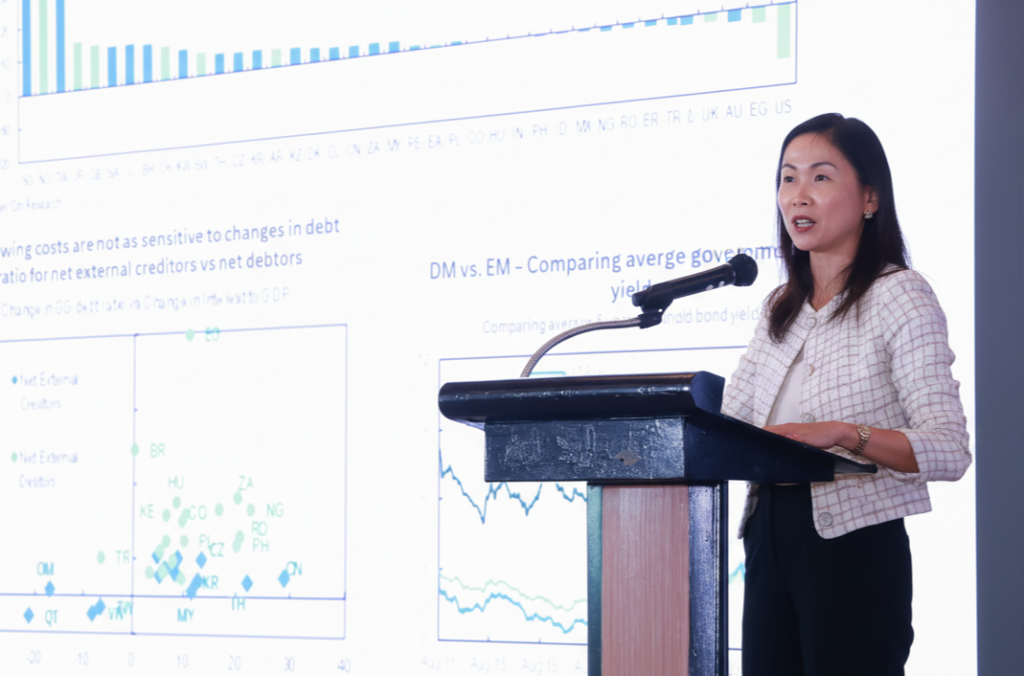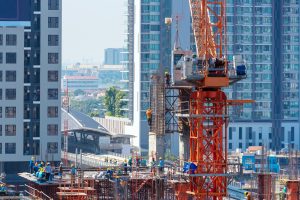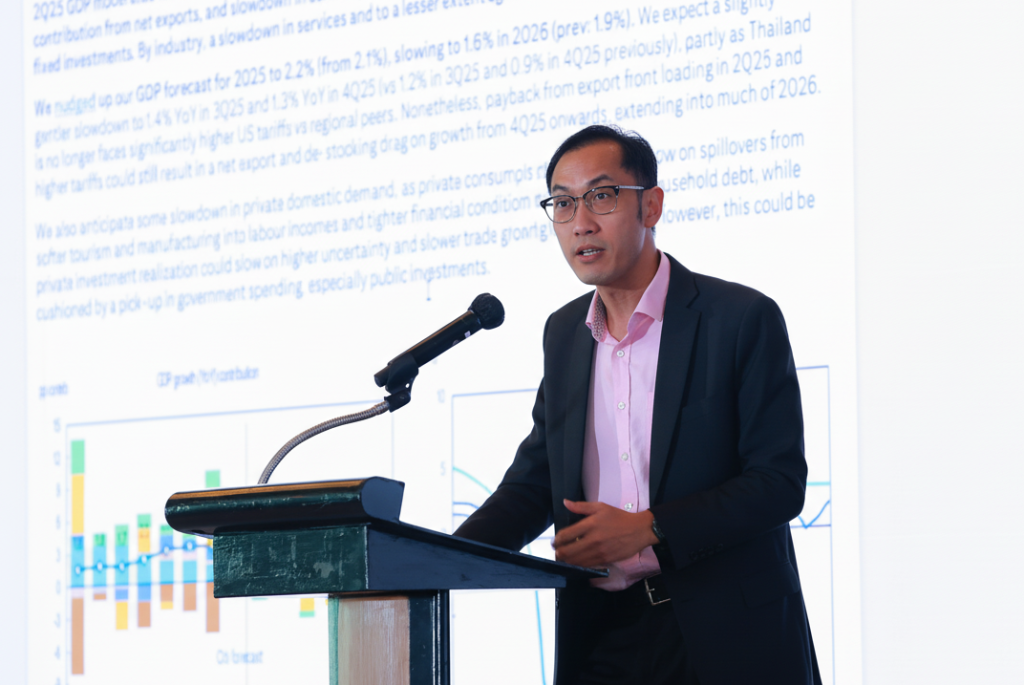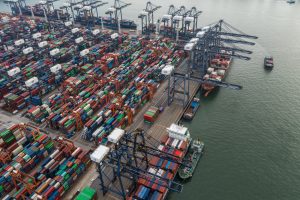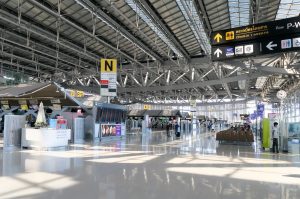Citibank forecasts global GDP growth to slow to 1.5% in the second half of 2025, following economic shocks. Meanwhile, Thailand’s GDP is projected at 2.2% in 2025 before easing to 1.6% in 2026 amid an export slowdown, a narrowly based recovery in private capex, and underperformance in tourism.
Johanna Chua, Head of Emerging Market Economics and Chief Asia Economist, Citigroup, said, “The global economy has remained resilient despite volatility, particularly from U.S. trade policy, as reflected in 1H25 global GDP growth of 2.4%. This is largely because most countries, apart from China, have yet to respond to U.S. tariffs. In addition, front loading by businesses and their efforts to absorb higher costs from tariffs have delayed the impact on consumers. Moreover, industries unaffected by tariffs, such as AI-related investment, electronics, and semiconductors, have continued to support exports, while many emerging markets, including Thailand, have seen narrower current account deficits, which has provided some cushion to global growth. However, as these buffers fade, Citi forecasts global GDP growth to slow to 1.5% in 2H25, before recovering to 2.9% and 2.8% in 1H26 and 2H26, respectively.”
“Meanwhile, the U.S. dollar is expected to weaken in 2H25, which may encourage capital inflows into emerging markets but could pose challenges for Asia and Thailand where currencies are strengthening while exports remain under pressure from tariffs. However, inflation across EMs remains very low compared to global inflation of around 3%, allowing central banks greater room for monetary policy easing to support economic activity,”
Wei Zheng Kit, Head of ASEAN Economics, Citigroup, added, “Citi forecasts Thailand’s GDP growth at 2.2% in 2025 before slowing to 1.6% in 2026, with the economy likely to see a more prolonged slowdown over the next few quarters as front loading fades and tariffs weigh on private domestic demand. While export growth slowed less than expected in July, supported by front loading, clearer signs of slowdown are emerging in 2H25. The extent of August export payback was stronger for Thailand vs other ASEAN peers, with the shrinking trade surplus likely indicative of much smaller net export lift (or even drag) in 3Q25, while the fall in manufacturing and agriculture production may point towards a sharper de-stocking drag.”
He added that private investment is showing signs of a narrowly based recovery, particularly in machinery and equipment, driven by projects approved in 2023–2024. However, Thailand’s lower labor productivity compared with regional peers has placed the country at a cost disadvantage, while structural impediments continue to weigh on longer-term investment. Tourism also remains fragile, with concerns over safety and a stronger baht weighing on arrivals. As of June 2025, Thailand’s tourist index has yet to recover to pre-COVID levels, while peers such as Singapore, Indonesia, and Vietnam have already exceeded pre-pandemic levels.
“For FY2026, fiscal spending is expected to be less expansionary than in the previous year as the government aims to narrow the fiscal deficit to 4.3% of GDP. This remains a key constraint to large-scale stimulus unless the public debt ceiling is raised to 70% of GDP. Under these fiscal limitations, Citi expects the BoT to maintain a dovish monetary policy stance given growth headwind, below-target inflation, and a stronger baht.” Kit concluded.

